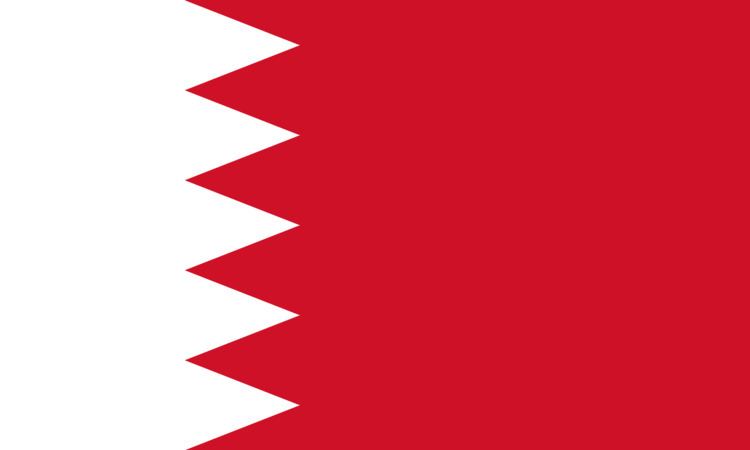Population 1.332 million (2013) Life expectancy 76.54 years (2012) | GNI per capita 35,760 PPP dollars (2012) Population growth rate 1.1% annual change (2013) | |
 | ||
Fertility rate 2.09 births per woman (2012) | ||
This article is about the demographic features of the population of Bahrain, including population density, ethnicity, education level, health of the populace, economic status, religious affiliations and other aspects of the population.
Contents
- Map of Bahrain
- Ethnic groups
- Registered data
- Structure of the population
- Religions
- CIA World Factbook demographic statistics
- Median age
- Urbanization
- Sex ratio
- Maternal mortality
- Health expenditure
- HIVAIDS
- Languages
- Literacy and education
- Education expenditure
- References
Map of Bahrain
Most of the population of Bahrain is concentrated in the two principal cities, Manama and Al Muharraq. According to the 2010 census 70.2% of the population, including non-nationals, are Muslim and over 99% of Bahraini population are Muslim.
Ethnic groups
Regarding the ethnicity of Bahrainis, a Financial Times article published on 31 May 1983 found that "Bahrain is a polyglot state, both religiously and racially. Discounting temporary immigrants of the past ten years, there are at least eight or nine communities on the island". These may be classified as:
Non-nationals make up more than half of the population of Bahrain, with immigrants making up about 55% of the overall population. Of those, the vast majority come from South and Southeast Asia: according to various media reports and government statistics dated between 2005-2009 roughly 290,000 Indians, 125,000 Bangladeshis, 45,000 Pakistanis, 45,000 Filipinos, and 8,000 Indonesians.
Registered data
Birth registration of Bahrain is available from 1976, death registration started in 1990. Between 1976 and 2011 the number of baby births roughly doubled but the birth rate of babies decreased from 32 to 13 per 1,000. The death rate of Bahrain (1.9 per 1,000 human beings in 2011) is among the lowest in the world.
Structure of the population
Structure of the population (01.07.2011) (Estimates) :
Religions
Islam is the official religion. The citizen population is 99.8% Muslim, although the Muslim proportion falls to 70.2% when the non-national population is included. Current census data doesn't differentiate between the other religions in Bahrain, but there are about 1,000 Christian citizens and about 40 Jewish citizens.
Muslims belong to the Shi'a and Sunni branches of Islam. There are no official figures, but the Shi'a constitute 60-70% of the Bahraini Muslim population. Foreigners, overwhelmingly from South Asia and other Arab countries, constituted 54% of the population in 2010. Of these, 45% are Muslim and 55% are non-Muslim, including Christians (primarily: Catholic, Protestant, Syrian Orthodox, and Mar Thoma from South India), Hindus, Bahá'ís, Buddhists, and Sikhs.
CIA World Factbook demographic statistics
The following demographic statistics are from the CIA World Factbook, unless otherwise indicated.
Median age
Total: 31.1 yearsMale: 32.5 yearsFemale: 28.3 years (2012 est.)Urbanization
Urban population: 89% of total population (2010)Rate of urbanization: 7.8% annual rate of change (2010-15 est.)Sex ratio
At birth: 1.03 male(s)/femaleUnder 15 years: 1.03 male(s)/female15-64 years: 1.75 male(s)/female65 years and over: 0.91 male(s)/femaleTotal population: 1.54 male(s)/female (2012 est.)Maternal mortality
20 deaths/100,000 live births (2010 est.).county comparison to the world: 139Health expenditure
14.5% of total GDP (2009)country comparison to the world: 49HIV/AIDS
Adult prevalence rate: 0.2% (2001 est.)county comparison to the world: 95People with HIV/AIDS: Fewer than 600 (2007 est.)county comparison to the world: 148Deaths: Fewer than 200 (2003 est.)county comparison to the world: 107Languages
ArabicEnglishBalochiPersianKurdishUrduMalayalamHindiSinhaleseTamilPunjabiBanglaLiteracy and education
Bahrain has traditionally boasted an advanced educational system. Schooling and related costs are entirely paid for by the government, and, although not compulsory, primary and secondary attendance rates are high. Bahrain also encourages institutions of higher learning, drawing on expatriate talent and the increasing pool of Bahrainis returning from abroad with advanced degrees. University of Bahrain was established in 1986 for standard undergraduate and graduate study, and the College of Health Sciences—operating under the direction of the Ministry of Health—trains physicians, nurses, pharmacists, and paramedics.
Overall literacy is 94.6% (96.1% for men and 91.6% for women) (2010 census).
